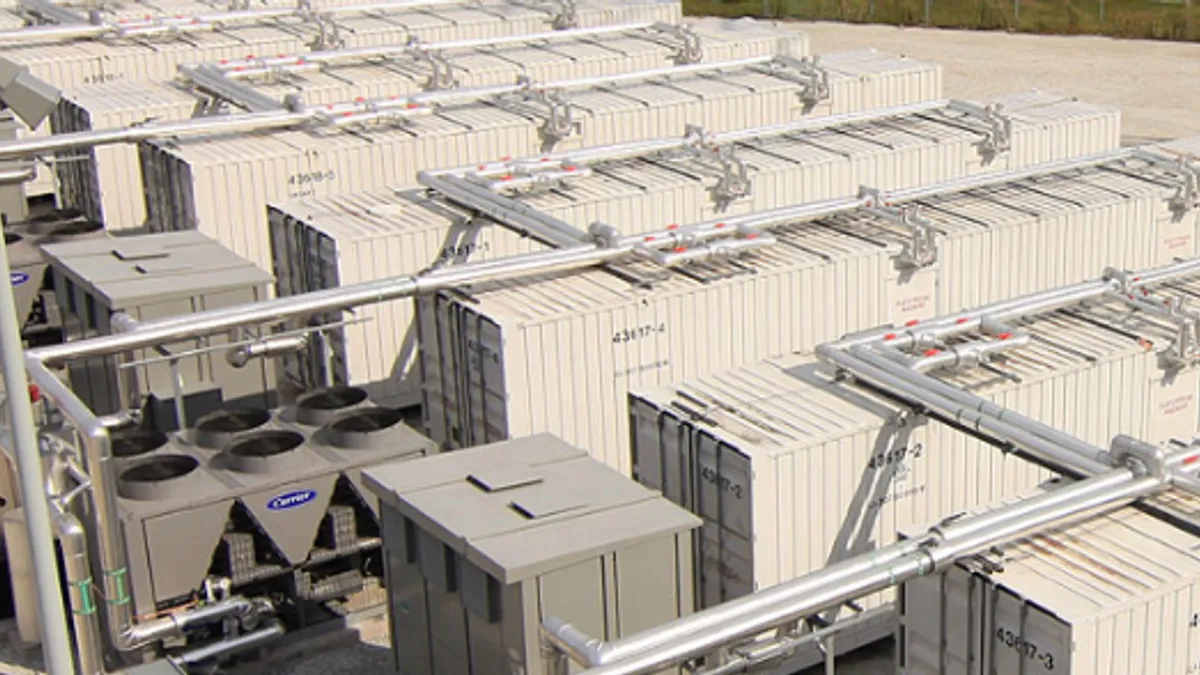Dive Brief:
- AES is planning a 300 MW battery and a more efficient gas generator for a facility in Long Beach to replace an older gas plant that has been in operation since the 1950s, Long Beach Post reports.
- The Alamitos Energy Center (AEC) and the Alamitos Battery Energy Storage System are expected to cost up to $1.5 billion and be in service in 2021.
- The new gas plant will be able to begin generating energy within minutes, allowing AES to help smooth the integration of more renewables onto California's grid. The current plant can take up to 36 hours to cold start.
Dive Insight:
AES is already developing 100 MW of battery storage operating at the Alamitos facility, according to the Long Beach Post, which will operate under a 20-year contract with Southern California Edison when it comes online in 2021. But AES plans to triple that capacity, and combined with the more efficient gas facility, the plant is a win for clean energy as well as neighborhood aesthetics, according to the developer.
The company has not yet set a schedule for development of the additional 200 MW, and that capacity has yet to be contracted, according to a company spokesperson.
“We are really excited about this state-of-the art, zero-emissions energy storage system,” an AES spokesperson told the Post. “This project is great for the community and the environment. It produces zero emissions and uses virtually no water. Aesthetically it is much more appealing as well. It will look like a modern-day, two-story data server facility.”
The project cements California's dominance over the market for energy storage due to AB 2514, the landmark legislation requiring the state’s investor owned utilities to procure 1.3 GW of energy storage by 2020.
The battery, capable of providing 600 MW, will be the largest in the world, "enabling the most efficient use of renewable energy resources, lowering costs and emissions, and providing increased reliability to the electrical grid," according to AES' fact sheet on the project.
Benefits to the neighborhood will go beyond aesthetics, AES said. During construction, the new gas plant alone will result in more than $132 million in local purchases, 1.48 million hours in construction-related work and a payroll of over $315 million. Once completed, the facility will contribute between $12.3 and $14.6 million annually to the local economy.
"Our new AEC will help prevent blackouts and fill the energy gap created by the closure of older,
less efficient plants in southern California," AES said. "It will be half the size of the existing one, will use more efficient technology, start and stop more quickly, and will help the state meet its energy efficiency
and greenhouse gas reduction goals."















